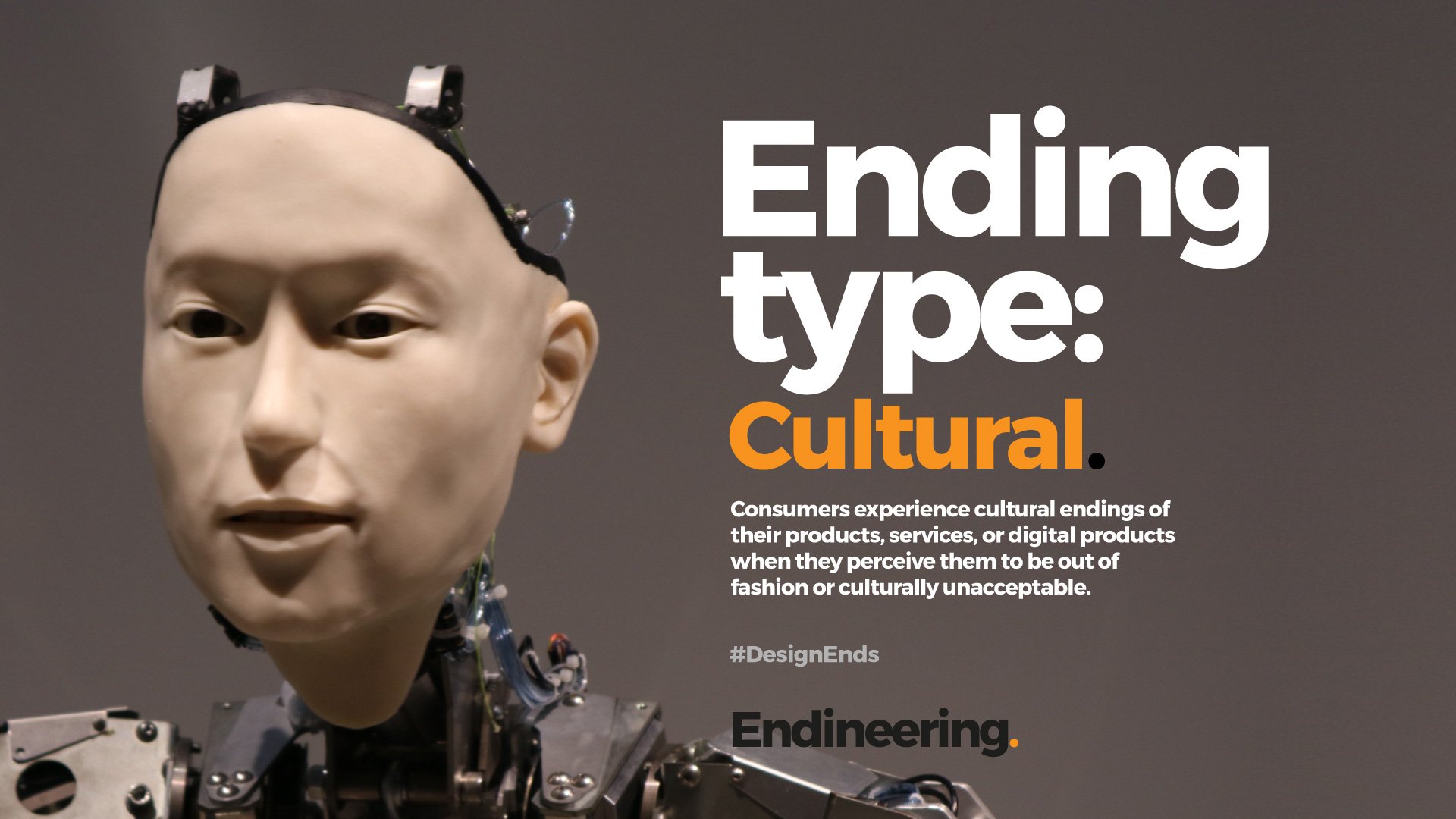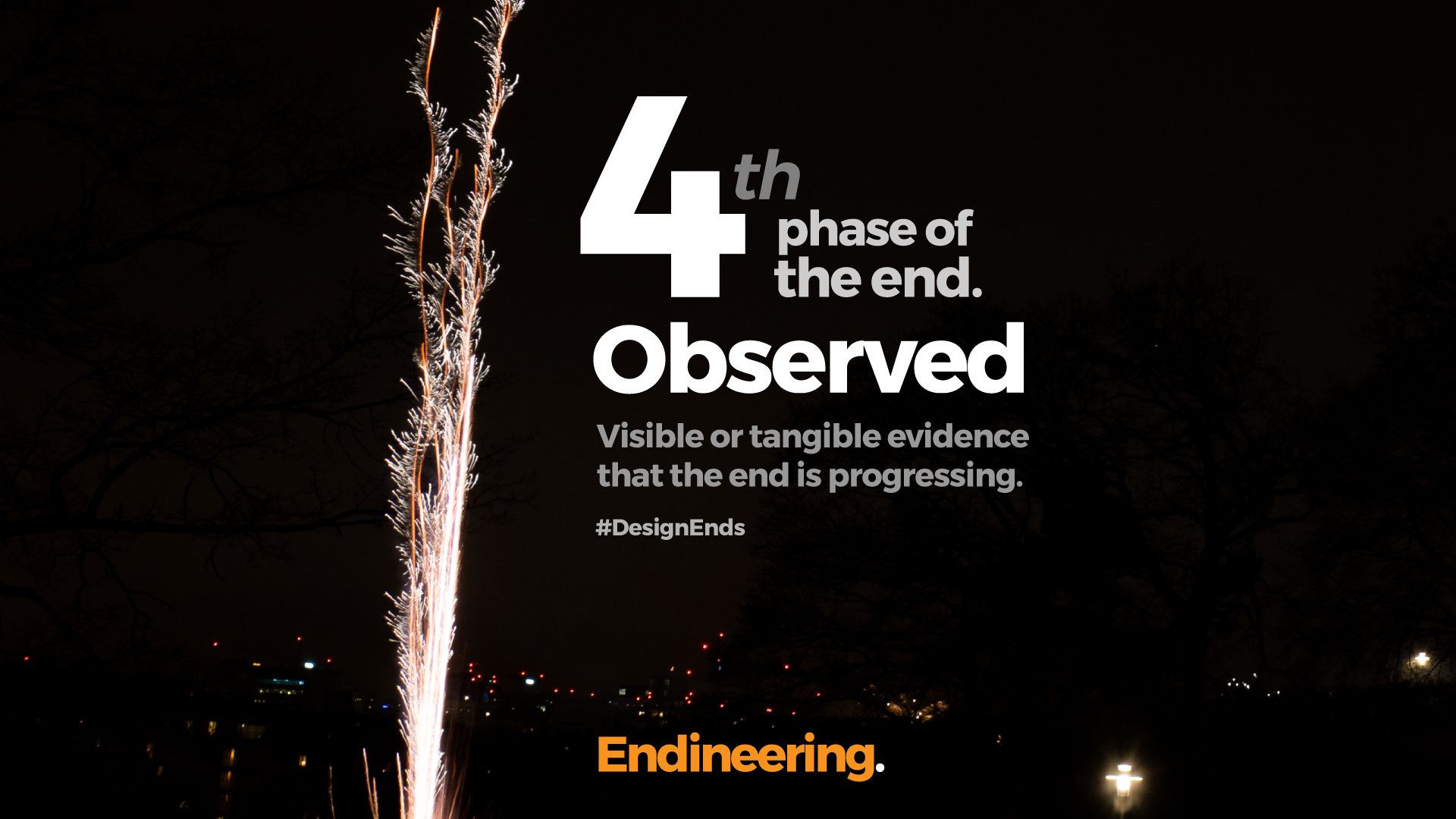
Ending Type: Cultural
Cultural ending: Consumers experience cultural endings of their products, services, or digital products when they perceive them to be out of fashion or culturally unacceptable.
Cultural ending: Consumers experience cultural endings of their products, services, or digital products when they perceive them to be out of fashion or culturally unacceptable.
This could be a service that was previously considered fantastic, but now feels wrong due to social perceptions or a particular look or feel. It could be a product that has a physical style or colour palette that has become less attractive. The problem might be a deeper, socially unpalatable point of view about race, gender, or the behaviour of company directors. A whole range of inappropriate points of view can bring an end to product, service, or digital products.
Usually cultural change is historically slow, steeped in generational differences in attitude. In recent decades such change has moved faster as a result of digital communication amongst other things. Many argue that social media has fuelled this acceleration. Some examples of cultural endings can be quite clear and strongly felt. Other examples like fashion or style are more nuanced and subjective.
Uncanny valley
A more human gauge of tolerance is demonstrated in the ‘uncanny valley’. First proposed by the robotics professor Masahiro Mori. He suggested ‘As the appearance of a robot is made more human, some observers’ emotional response to the robot becomes increasingly positive and empathetic, until it reaches a point beyond which the response quickly becomes strong revulsion'.
In the last few months people on Twitter having been experiencing a cultural type of ending. Some would say that cracks have been building for years as Twitter became an increasingly vocal place for people to spread hate. These cracks opened further with the acquisition of the platform by Elon Musk. His ego centric persona and erratic leadership style have led many to feel the platform has culturally shifted. Changing the brand too far for some people and businesses. In essence a cultural ending has taken place on Twitter for many.
Understanding the different types of ending helps businesses and product developers appreciate the experience a consumer is going through. In turn this helps a business create better off-boardings and endings from the their product.
Find out more about Ending Types in the Endineering book.
Or on the Endineering course.
Phase 4. Observed.
There are 7 phases of the consumer off-boarding experience. Each one has different characteristics, needs and opportunities. The fourth of these phases is Observed, where the consumer experiences visible or tangible evidence that the end is progressing.
Phase 4 of the consumer off-boarding experience is Observed.
Visible or tangible evidence that the end is progressing.
At some point in the off-boarding experience the consumer might be shown a representation of the end happening. This could be the crushing of a plastic bottle, or a graphic depicting the deletion of files, or a piece of paper with evidence that actions are in progress. This is a useful method of informing the consumer of progress and encouraging the idea of closure at the end of the consumer lifecycle.
Sometimes this might be a difficult experience for the consumer to witness. In other situations, it might come as a relief. As an experience it helps to re-enforce a negative situation or a legal status. In other cases, it helps build trust that a conclusion is imminent.
A crescendo of fireworks
Fireworks have often been a feature of endings. They bring an awe–inspiring visual thrill that helps punctuate an event, bonding large groups of people together in reflective wonder. National holidays and New Year celebrations are common reasons for fireworks. As a world leader in creating experiences, Disney does a great job in bringing an end to a visitor’s day.
There are seven daily alternative shows. Some are located around the Disney Castle, which provides an impressive foreground feature. Others are located around different parts of the parks. They seem to be universally loved by guests, helping to embed memories for years to come. Here is a reaction from a visitor to the Florida park.
However, when researching this aspect of phases of the end in 2020, we were all locked down, as were the park attractions. Putting the crescendo out of reach at the time. As the Disney website puts it - Happily Ever After, Temporarily Unavailable.
Microsoft UX guidelines
The Microsoft UX guidelines describe how animations can help the consumer observe the deletion of a file. An added level of graphics helps the consumer see the difference between recoverable deleted files and permanently deleted files.
“The progress bar for the Outlook Delete command displays the Recycle Bin for the destination if the files can be recovered, but no Recycle Bin if the files can’t be recovered. In this example, the lack of a Recycle Bin reinforces that the files are being permanently deleted.”
The lack of a destination brings up a recurring problem with deletion of data, which is that there is no evidence to prove the end has happened.




